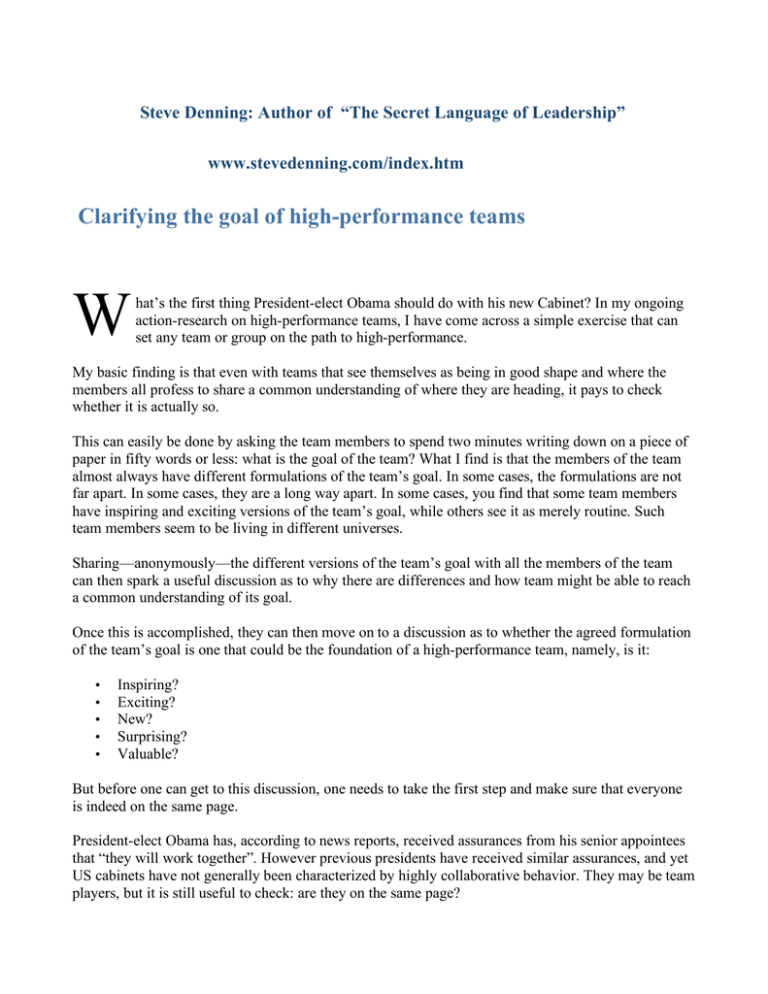W Clarifying the goal of high-performance teams
advertisement

Steve Denning: Author of “The Secret Language of Leadership” www.stevedenning.com/index.htm Clarifying the goal of high-performance teams W hat’s the first thing President-elect Obama should do with his new Cabinet? In my ongoing action-research on high-performance teams, I have come across a simple exercise that can set any team or group on the path to high-performance. My basic finding is that even with teams that see themselves as being in good shape and where the members all profess to share a common understanding of where they are heading, it pays to check whether it is actually so. This can easily be done by asking the team members to spend two minutes writing down on a piece of paper in fifty words or less: what is the goal of the team? What I find is that the members of the team almost always have different formulations of the team’s goal. In some cases, the formulations are not far apart. In some cases, they are a long way apart. In some cases, you find that some team members have inspiring and exciting versions of the team’s goal, while others see it as merely routine. Such team members seem to be living in different universes. Sharing—anonymously—the different versions of the team’s goal with all the members of the team can then spark a useful discussion as to why there are differences and how team might be able to reach a common understanding of its goal. Once this is accomplished, they can then move on to a discussion as to whether the agreed formulation of the team’s goal is one that could be the foundation of a high-performance team, namely, is it: • • • • • Inspiring? Exciting? New? Surprising? Valuable? But before one can get to this discussion, one needs to take the first step and make sure that everyone is indeed on the same page. President-elect Obama has, according to news reports, received assurances from his senior appointees that “they will work together”. However previous presidents have received similar assurances, and yet US cabinets have not generally been characterized by highly collaborative behavior. They may be team players, but it is still useful to check: are they on the same page? For more on high-performance teams, go to: How do you create high-performance teams? What is exceptional performance in a high-performance team? Sign up here to get Steve Denning's newsletter about organizational storytelling Email: Go Steve Denning consults and gives workshops and keynote presentations on topics that include: leadership, innovation, organizational storytelling, business storytelling, springboard storytelling, knowledge management, branding, marketing, values, communication, communities of practice, business performance, collective intelligence, tacit knowledge, business collaboration, knowledge, learning, community, performance improvement, visionary leadership, social potential, institutional community building, and internal communications. You can contact Steve at steve@stevedenning.com Copyright © 2000-2004 Stephen Denning Webmaster CR WEB CONSULTING home | learn organizational storytelling | understand knowledge management | contact me | get my bio arrange a tailor made workshop | get my newsletter | read my blog | go to CreatingThe21stCentury.org Read my books: The Leader's Guide to Storytelling | Squirrel Inc | The Springboard | All my books






